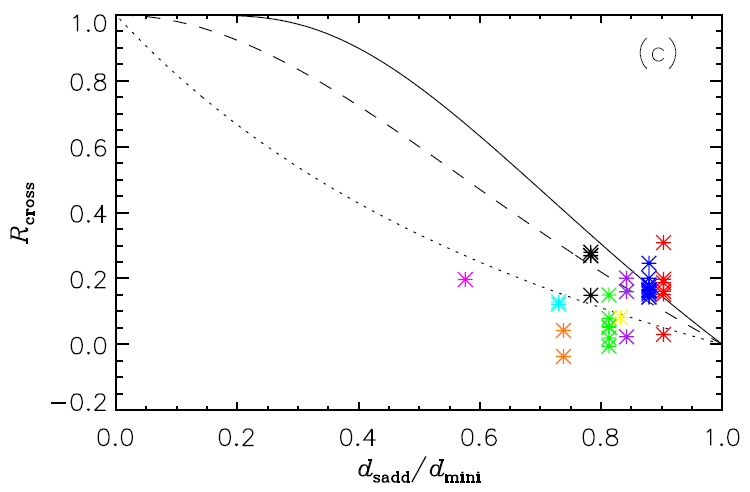Producing multiple images of distant quasars or galaxies by foreground galaxies or galaxy clusters is one of the most distinct qualities of strong gravitational lensing. In this work, we mainly study the magnification relations of quad lens models for cusp, fold and cross configurations. By dividing and ray-tracing in different image regions, we numerically derive the positions and magnifications of the four images for a point source lying inside of the astroid caustic. Then, based on the magnifications, we calculate the cusp and fold relations for the singular isothermal elliptical lenses. The positive region of the fold relation map is usually larger than the negative region as has been confirmed before. It can also explain that for many observed fold image pairs, the fluxes of the Fermat minimum images are apt to be larger than those of the saddle images. 
By with CHU Zhe Figure 1. The solid (SIED), dashed (SIEP and Point+shear) and dotted (SIQ and SIS+shear) curves show the cross relations as functions of distance ratios. The nine different coloured stars represent nine lens samples of Einstein cross type (Q2237+0305: red, H1413+117: green, HE 0435–1223: blue, SDSS 1138+0314: yellow, HST 14176+5226: cyan, HST 12531−2914: brown, HST 14113+5211: magenta, J1011+0143: violet, J1149+2223: black). We define a new quantity cross relation Rcross which describes the magnification discrepancy between two minimum images and two saddle images. Distance ratio dsadd/dmini is also defined as the ratio of the distance of two saddle images to that of two minimum images. We calculate the cross relations and distance ratios for nine observed Einstein crosses including 7 quasars, 1 galaxy and 1 supernova (see Fig. 1). In theory, for most of the quad lens models, the cross relations decrease as the distance ratios increase. In observation, the cross relations of the nine samples do not agree with the quad lens models very well, nevertheless, the cross relations of the nine samples do not give obvious evidence for anomalous flux ratio as the cusp and fold types do. We discuss several reasons for the disagreement, and expect good consistencies for more precise observations and better lens models in the future. The research work by Zhe Chu, Guoliang Li, Weipeng Lin (Sun Yat-Sen University) and Hengxing Pan has been published in MNRAS (2016, Vol.461, 4466). For more details please see: http://mnras.oxfordjournals.org/content/461/4/4466 |
